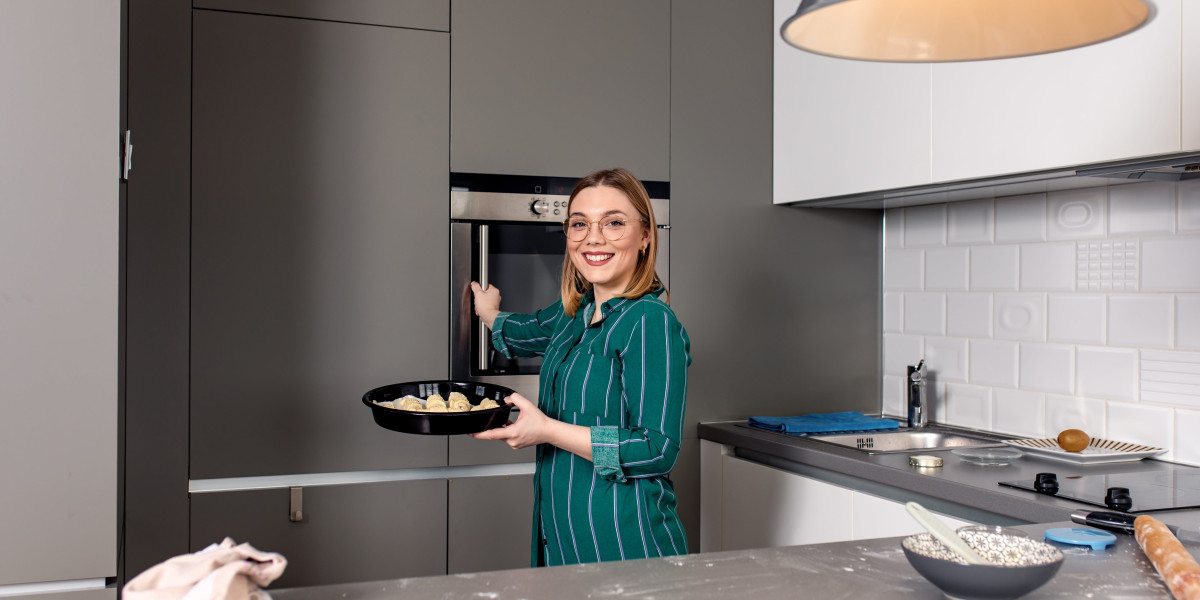The Rise of Integrated Ovens and Hobs: An In-Depth Look
In today's busy world, home cooking has gone through a considerable transformation. One innovation that has profoundly impacted kitchen style and functionality is the integrated oven and hob, which combines both cooking appliances into a single, cohesive system. This article checks out the advantages, types, installation factors to consider, and vital functions of integrated ovens and hobs, as well as providing standards for consumers pondering an upgrade.
What is an Integrated Oven and Hob?
An integrated oven and hob is a kitchen device that combines an oven and a cooking surface area (the hob) into one system, often developed to be built into the kitchen cabinets. This style provides a sleek, contemporary aesthetic and makes the most of kitchen space, while also providing performance for cooking and baking. As the choices for open-plan living continue to rise, integrated units produce a structured appearance which mixes effortlessly with kitchen furnishings.
Key Advantages of Integrated Ovens and Hobs
- Space-Saving Design: Integrated units are perfect for smaller sized cooking areas, permitting property owners to utilize readily available space successfully without jeopardizing on performance.
- Visual Appeal: With their structured look, these appliances develop a modern-day and cohesive kitchen style, getting rid of the requirement for standalone systems.
- Alleviate of Use: Integrated ovens and hobs usually come with user-friendly interfaces and controls, making them available for cooks of all skill levels.
- Improved Safety: Many integrated units feature safety systems, such as kid locks or automatic shut-off functions, which can enhance security throughout cooking.
- Energy Efficiency: Integrated appliances often boast improved energy efficiency, minimizing electrical power expenses and ecological effect.
Types of Integrated Ovens and Hobs
Integrated ovens and hobs are offered in numerous setups to deal with different cooking requirements and preferences. Below are some popular types:
| Type | Description |
|---|---|
| Single Oven + Hob | A standalone oven with a Hisense Built-in Electric Single Oven - Black hob on top; suitable for compact cooking areas. |
| Double Oven + Hob | Provides two ovens for increased cooking capability, paired with an integrated hob. |
| Steam Oven + Hob | Combines standard cooking with steam functionality, enhancing food tastes and nutrients. |
| Induction Hob + Oven | Functions an induction hob, offering fast heating and energy performance. |
| Gas Hob + Oven | Integrates the responsiveness of gas cooking with an intergrated electric oven or conventional oven. |
Installation Considerations
When incorporating an integrated Oven installation and hob into a kitchen remodel or new build, several elements require to be thought about:
- Space Requirements: Ensure that there is adequate space for the combined system which it meets local building regulations.
- Ventilation: Adequate ventilation is vital, specifically for gas systems, to prevent accumulation of toxic gases.
- Source of power: Determine the appropriate power source (electric, gas, or dual-fuel) and ensure that the kitchen has the needed hookups in location.
- Style and Finish: Choose a design and surface that complements the total style of the kitchen. Stainless steel, black, and white are popular finishes.
- Expert Installation: It is suggested to hire a certified service technician for installation, especially for gas units, to make sure security and compliance with structure codes.
Vital Features to Look For
Consumers must think about different functions when picking an integrated oven and hob:
- Self-Cleaning Options: Many modern ovens featured self-cleaning functions, making maintenance easier and more efficient.
- Smart Technology: Some integrated designs offer smart functions such as remote control, cooking guides, and notices.
- Multi-Cooking Functions: Look for ovens that enable various cooking approaches (bake, broil, steam, and so on).
- Security Features: Ensure that the unit includes safety features such as an automobile shut-off, heat indications, and safe and secure lock systems.
- User-Friendly Controls: Intuitive touch controls or knobs can improve the cooking experience.
Regularly Asked Questions (FAQs)
1. Are integrated ovens and hobs more energy-efficient than standalone systems?
Yes, integrated ovens and hobs are typically developed to be more energy-efficient, making them a reasonable choice for the environmentally-conscious consumer.
2. Can I install an integrated oven and hob myself?
While it is possible for skilled DIY lovers, it is usually suggested to have actually a certified service technician perform the setup, particularly for gas appliances, to ensure safety and compliance with regulations.
3. Do integrated systems have the very same cooking capability as standalone appliances?
Yes, many integrated models are created to match or exceed the cooking capabilities of standalone units, using adequate space for numerous cooking needs.
4. What is the life expectancy of an integrated oven and hob?
With correct care and maintenance, integrated ovens and hobs can last anywhere from 10 to 15 years or more.
5. Are there any brand names that concentrate on integrated ovens and hobs?
Yes, numerous respectable brands, such as Bosch, Neff, Smeg, and AEG, use a broad variety of integrated ovens and hobs that deal with different budget plans and preferences.
The integrated oven and hob represent a substantial development in kitchen technology, combining style, functionality, and effectiveness into a single appliance. As families continue to welcome modern cooking methods and looks, these units will likely gain a lot more appeal. Customers need to consider their cooking routines, kitchen styles, and personal choices when choosing the best integrated unit, ensuring they take pleasure in the many benefits of these ingenious appliances for years to come.
By comprehending the different types, setup factors to consider, and Ovensandhobs.Uk necessary features of integrated ovens and hobs, homeowners can make informed choices as they purchase their cooking areas.









